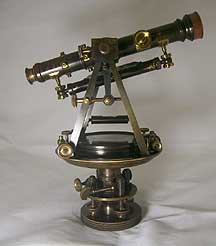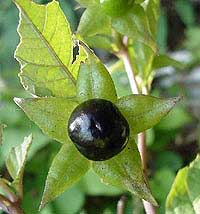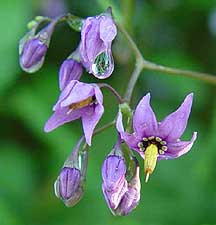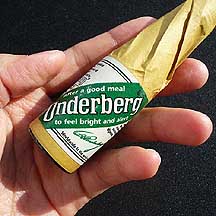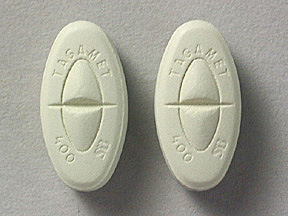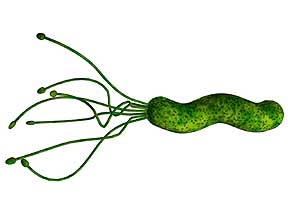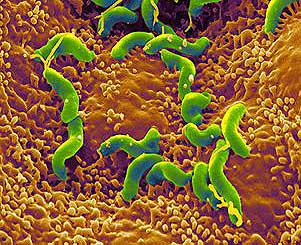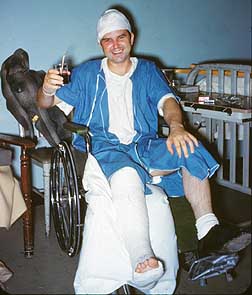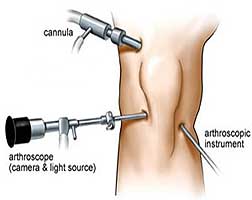THE ACCIDENTAL CURE
MY MEDICAL RECORD
From early childhood I had a “delicate” stomach. It never took much to cause upset and abdominal pains were not unusual. Except for the appendectomy when I was about 7, though, it never got bad enough to see a doctor.
From 1958-1960, Uncle Sam entertained me in the U.S. Army. I drank a lot, smoked a lot, took up plug tobacco, and felt stressed. At one point I had to sign for the inventory of the entire Survey Section. It included all of the transits, theodolites, and sundry survey equipment, all the radios and other commo stuff, a 2 ½ ton truck, two ¾ ton trucks, a few jeeps, and one of those humongous Armored Personnel Carriers (APC). It was bad enough to be responsible for all of that, but some of the radios and jeeps were “on loan” and I never did know where they were. I was young and I was a draftee and I hated the Army and it all churned inside of me and I developed an ulcer.
|
|
|
|
|
|
I went on sick call and saw the Army doctor who prescribed belladonna and recommended a bland diet, stop smoking and drinking, and reduce stress. Being in the Army, I had little choice about diet, no way would I quit my “crutches”, and my stress was controlled by others.
The belladonna was interesting. It’s the product of a plant called the deadly nightshade. It’s a strong poison, but in proper low dosage it offers some relief to gastric distress. I would take a few drops on a sugar cube and indeed it felt momentarily better. When on the town drinking that great German beer, I would order the occasional Underberg, a vile liquid which comes in a tiny individual serving bottle and was touted as a digestif.
|
|
|
|
|
|
After the Army I worked for a while in Michigan to put together a nest egg and went back to finish college. I drank a lot, smoked a lot, and felt stressed. College was touch and go. I had been away for so long that it was not possible to continue my chemical engineering program. The first term I signed up for advanced math for engineers. It met four days a week. At the end of one week I had no idea what was going on. The instructor would put an extended formula on the board and say “Now let’s assume every other term goes to zero, blah, blah ….”. I could never understand his leaps of “logic”. I dropped out and took “Introduction to Economics”. I also changed to a divisional major in math and physical science. I worked evenings and weekends for some spending money and lived with my folks, but the stress and the pain went on.
I checked with the college doctor since it was free. He recommended antacids, a bland diet, stop smoking and drinking, and reduce stress. I used a lot of antacids, and they did help a little, but the rest was just my life.
After graduation, I toured Europe for ten weeks. I drank a lot, smoked a lot, and felt stressed. How could I feel stressed on vacation? I didn’t have enough money and I was trying to decide what to do about my German girlfriend.
I saw a doctor in Germany who probably knew English better than I knew German, but he didn’t want to speak English so we conducted the exam in German. He diagnosed my condition as zwölffingeredarmgeschwür – ulcer. He recommended chamomile tea, a bland diet, stop smoking and drinking, and reduce stress. Yeah, I’m on vacation in Europe and I’m going to eat a bland diet and drink tea?
I got through a few years working in California and then in short order I married, was transferred to Bangkok, JR was born, and all facets of my life changed. I drank a lot, smoked a lot, and felt stressed. I saw a British doctor who prescribed tranquilizers, a bland diet, stop smoking and drinking, and reduce stress. I took the pills and ate a bit more carefully, was able to mitigate the pain, but the rest was just me.
Back in CA after Bangkok, I changed companies. I still drank a lot, and I still felt stressed, but I quit smoking. I recall driving home on the freeway and feeling nauseous at about the same place every night. I would gag and swallow repeatedly until my salivary glands flooded my mouth and then, like magic, the pain would stop. I went to see a real doctor. With x-rays and other real techniques he diagnosed a duodenal ulcer. He prescribed the relatively new Tagamet (released in 1979), and also mouthed the same words I’d heard so often about bland, stop, and reduce. To me Tagamet was a miracle drug! I was able to keep my lifestyle as long as I kept the drugs around for the pains. Zantac (released in 1981) may have been prescribed as well, but I remember Tagamet with gratitude!
The problem was that these drugs treated the symptoms but did not cure the ulcer!
|
|
|
|
|
|
THE RESEARCH
In 1979, Australian Robin Warren found that the guts of ulcer patients were overrun with the bacteria Helicobacter pylori. He realized even then that antibiotics might actually cure the ulcer. Conventional wisdom however, held that stress was the cause of ulcers and antacids, bland diet and lifestyle changes to reduce stress were the cure. When these treatments failed, surgery was the next course.
In 1981, Barry Marshall was in his third year of internal medicine training, and needed a project. Warren related his discovery of H. pylori in ulcer patients to Marshall and explained his belief that antibiotics were the answer.
|
|
|
|
|
|
In 1982, Marshall set up a controlled trial with 100 patients. Cultures of biopsies all were negative until they discovered that this particular bacterium was slow growing. Allowing adequate time for culture resulted in 13 patients with duodenal ulcer – all 13 with H. pylori!
Marshall presented his results to the Royal Australasian College of Physicians in Perth. The idea was deemed too weird.
Marshall and Warren wrote letters to The Lancet describing their findings. The information was published but ignored. Drug companies were making fortunes on ongoing relief of ulcer pains and weren’t really interested in cures.
Finally, one company contacted Marshall to report that their ulcer product which contained bismuth seemed to cure the ulcer! Marshall applied their product to cultures and found that it indeed killed H. pylori! He presented this information to a sympathetic microbiology conference and they loved it.
In 1983, the pair wrote a complete paper with all of their findings and had it rejected. The $3 billion industry built on ulcer/antacid/surgery would not crack.
Marshall needed more proof. In a move that made him famous, he drank a potion containing H. pylori and waited to see what would happen. He got gastritis, had an endoscopy that found a robust infection with H. pylori, and had the additional proof he needed.
In 1985, Marshall published again in the Medical Journal of Australia. The paper was again largely ignored. He did have patients coming to him and going away cured, but the medical community would not accept.
Marshall moved to the United States. His story, particularly the experiment on himself, caught the attention of the popular media. The National Institutes of Health and the Food and Drug Administration got involved.
Between 1993 and 1996 a sea change occurred and antibiotics became the accepted cure for ulcer. During their frustrating experience Marshall and Warren found that stomach cancer had the same cause and cure and that both of these diseases can be cured if detected and treated with antibiotics.
In 1995, both Tagamet and Zantac 75 were cleared by the FDA for over the counter sale. The drug companies obviously could see that prescriptions for these drugs would soon cease and chose to abandon that approach in favor of the uncontrolled OTC market.
In 2005, Marshall and Warren shared a Nobel Prize for their work on H. pylori.
CONCLUSION
Since my retirement I’ve had plenty of time to reflect on my life. I know that the pains in my abdomen ceased sometime in the mid-80s and never returned. I know that I became more aware of health issues about that time and made a few adjustments. Which change had an impact on the ulcer is hard to tell for sure.
However, in 1985 my dentist advised me to have my wisdom teeth pulled because they were pressing against the teeth next to them. I made an appointment with an oral surgeon and had all four removed. The procedure involved full anesthetic and a strong antibiotic regimen afterward.
Also in 1985 my right knee acted up. When that leg was broken in 1961, it was set poorly and over the years it deteriorated. I had arthroscopic surgery to clean up scar tissue and disconnect adhesions from the knee cap, smooth out the cartilage on the underside of the knee cap and drill holes in the knee cap to encourage cartilage regrowth. Again, full anesthetic and a strong antibiotic regimen were de rigueur.
Putting two and two together, I get FOUR. I believe that the two protracted doses of antibiotics in 1985 “accidentally” cured the ulcer I had lived with for some 25 years.
|
|
|
|
|
|
The following video gives a
pretty good look at “shaving” the under side of the knee cap:
http://www.youtube.com/watch?v=7e7tHvzVheY
I don’t want to leave the reader with the idea that I suffered constantly during these years. I had ups and downs, but my “little friend” (as my father-in-law used to call his ulcer) was almost always there at some level. Tagamet provided the first real consistent relief and I took that off and on as needed in the early 80’s. And then in 1985, poof, it was gone! An accidental cure?
INCREDIBLE NEW TOPIC
You have probably heard or seen the recent announcement of creation of the first synthetic cell. Do take 18 minutes to watch Craig Ventner detail the history of this effort. Then prepare yourself to be injected with flu vaccine next year produced by this method!
http://www.ted.com/talks/craig_venter_unveils_synthetic_life.html
If you are not familiar with TED talks, do snoop around – they could change your life.
[Visitor number
]

